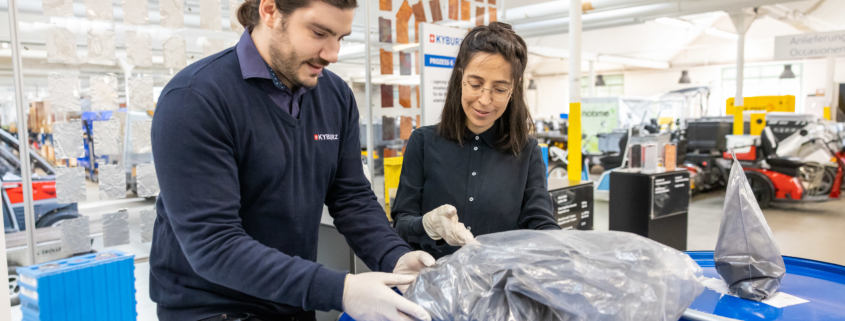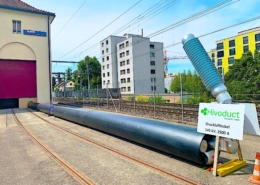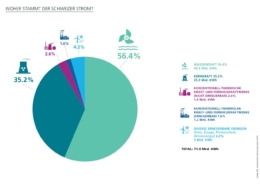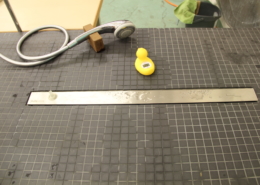Improving the durability of lithium-ion batteries for electric vehicles
Improving the durability of electric vehicle batteries at all stages of their life cycle. This is the challenge set by the partners of the CircuBAT project, a Flagship project supported by Innosuisse. The aim is to reduce the ecological footprint of automotive lithium-ion (Li-ion) batteries throughout their life cycle by creating a circular business model.
The share of electric vehicle sales has risen steadily in recent years, and this trend is set to continue. Switzerland is set to align itself with the European Union, which has decided to ban the sale of gasoline-powered vehicles from 2035. To meet this deadline, a number of challenges still need to be overcome, not least in terms of sustainability. "Li-ion batteries are not yet sustainable, and their production still depends on raw materials, some of which are considered critical and whose extraction is problematic", says Professor Andrea Vezzini of the Berne University of Applied Sciences, who heads the CircuBAT project.
Explaining the stages in a battery's life cycle
The CircuBAT Flagship project brings together 31 partners from Swiss industry and academia. Each is working on its own sub-project, with the aim of optimizing the various stages in a battery's value chain, from the creation of repairable models and their more efficient management, to the dismantling and reuse of components.
Before a battery can be recycled, its various parts have to be dismantled. "The aim is to separate the components in order to access the cell elements without destroying them," explains Christian Ochsenbein, Director of the Swiss Battery Technology Center. "Today, this process is carried out manually, which is labor-intensive and time-consuming, and can be dangerous. We are therefore working to develop automation methods using robots." As part of the Circubat project, this step should also provide guidance to manufacturers on the production of batteries optimized for easy repair and disassembly.
Current recycling methods consume a great deal of energy and recover only a small proportion of the materials contained in a battery. Another stage of the project involves improving the material recovery process. "We open the battery cells to recover the main components. The battery's active materials are then isolated in a water bath. In other words, materials such as copper, aluminum and the corresponding active material containing lithium, manganese, nickel, graphite and cobalt can be recovered, then resold or used to produce new batteries", explains Olivier Groux, Battery Recycling Manager at Kyburz AG. This process is currently being developed in close collaboration with EMPA, where researchers are responsible for purifying and regenerating the materials. "Our aim is to recover the active material particles, in particular metal oxides and graphite, and return them to their original structure, so as to guarantee the reuse of quality materials for the manufacture of new batteries", adds Dr Nora Bartolomé, researcher at EMPA.

Today, the first life of automotive batteries averages around ten years. After that, these batteries often still have 80% of their initial charge capacity, so they can be used for many years as grid storage batteries, particularly for solar or hydroelectric power. "A battery ageing model is developed to ensure rapid, cost-aware decision-making to determine if and when a battery should be removed from its first use to move on to its second life, or whether it should be recycled immediately," explains Andrea Vezzini. Data from this process is analyzed and exploited to develop models describing battery ageing based on Big Data and Machine Learning.
Towards greater sustainability
"CircuBAT is unique in its systemic approach to innovation. Our aim is to find optimal solutions for the Swiss market, while taking international developments into account," says Andrea Vezzini. Launched in 2022, the research is progressing well. "For demonstration purposes, we have installed our first second-life storage system at the Swiss Bike Park site, and we have successfully refurbished a ten-year-old electric truck with a view to studying the behavior of its batteries beyond their typical initial lifespan." The various stages and the work of all the project partners should make it possible, in the long term, to set up a complete system for recovering used batteries and thus make electric mobility more sustainable.
Article provided by Innosuisse,
Images:
 Innosuisse
Innosuisse
 HivoductDruckluft isoliert Erdkabel
HivoductDruckluft isoliert Erdkabel  Mehrzwecknutzung alpiner Speicherseen
Mehrzwecknutzung alpiner Speicherseen  BFEFakten und Zahlen: Woher stammt der Schweizer Strom?
BFEFakten und Zahlen: Woher stammt der Schweizer Strom?  BFE - Brigitte MaderBis zu 50% Energie sparen mit Joulia – Wo die Watt d’Or-Gewinnerin von 2013 heute steht
BFE - Brigitte MaderBis zu 50% Energie sparen mit Joulia – Wo die Watt d’Or-Gewinnerin von 2013 heute steht 
 shutterstock
shutterstock © BFE
© BFE
Trackbacks & Pingbacks
[…] – Améliorer la durabilité des batteries lithium-ion des véhicules électriques […]
Kommentare sind deaktiviert.